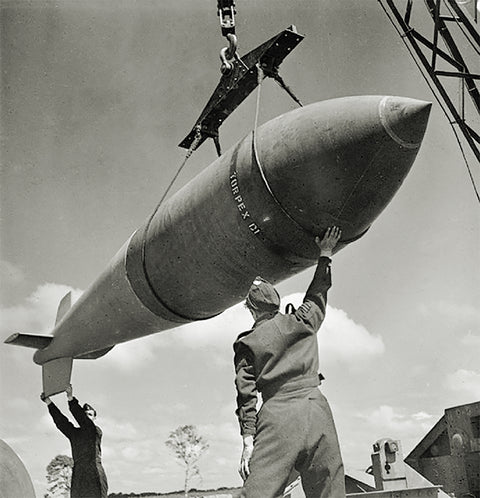
These WWII British Bombs Were So Powerful They Were Named ‘Earthquake’
Three of Britain’s most formidable and memorable wartime bombs were the inspiration of one man, aviation engineer Sir Barnes Wallis. When war broke out, Wallis, working at the Vickers aircraft factory, wrote a paper advocating a strategic bombing campaign that could disrupt Germany’s war machine. For this he proposed “earthquake” bombs: supersized explosives that could penetrate heavily fortified German targets such as U-boat pens, V-2 assembly and launch sites, concrete viaducts, and railroad bridges. Two earthquake bombs eventually went into production late in the war: the 12,000-pound Tallboy in 1944 and the 22,000-pound Grand Slam the following year. Modified four-engine Avro Lancasters were the only airplanes powerful enough to carry the weapons, the largest conventional bombs of World War II.
In 1942, Wallis conceived a new weapon, a bomb that bounced along the surface of water like a skipping stone. Codenamed “Upkeep,” these barrel-shaped bombs were equally impressive in size, and RAF brass approved a plan to utilize them to destroy dams in Germany’s industrial Ruhr Valley. Lancasters again led the charge, and the British successfully executed the famed Dam Busters raid in May 1943.
